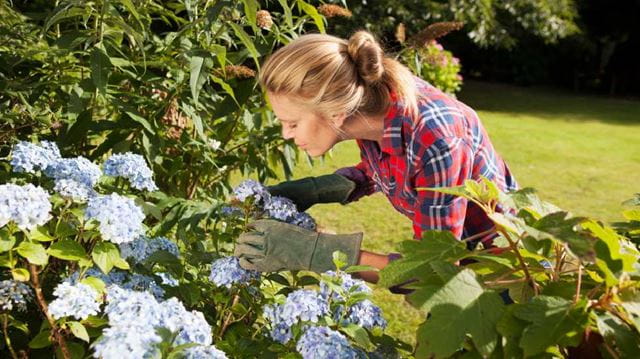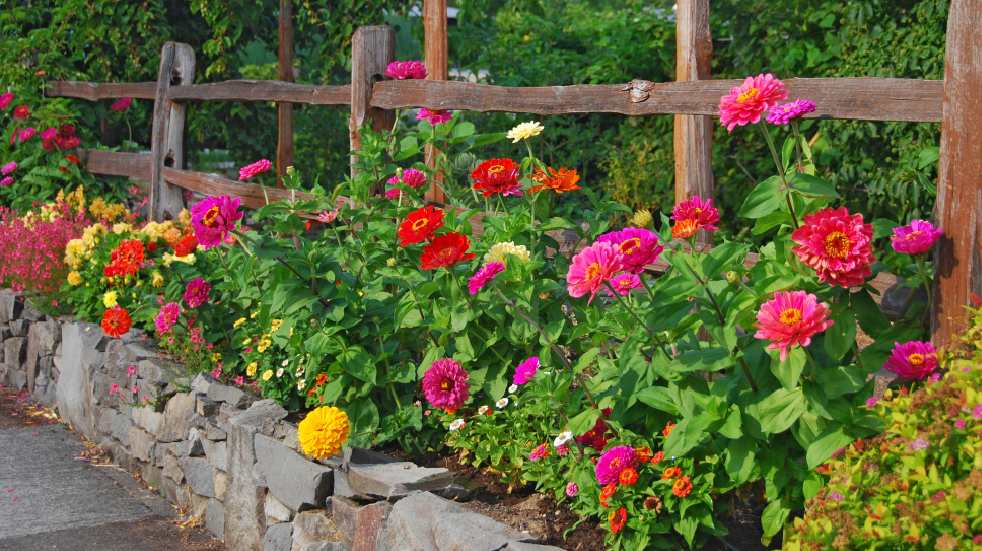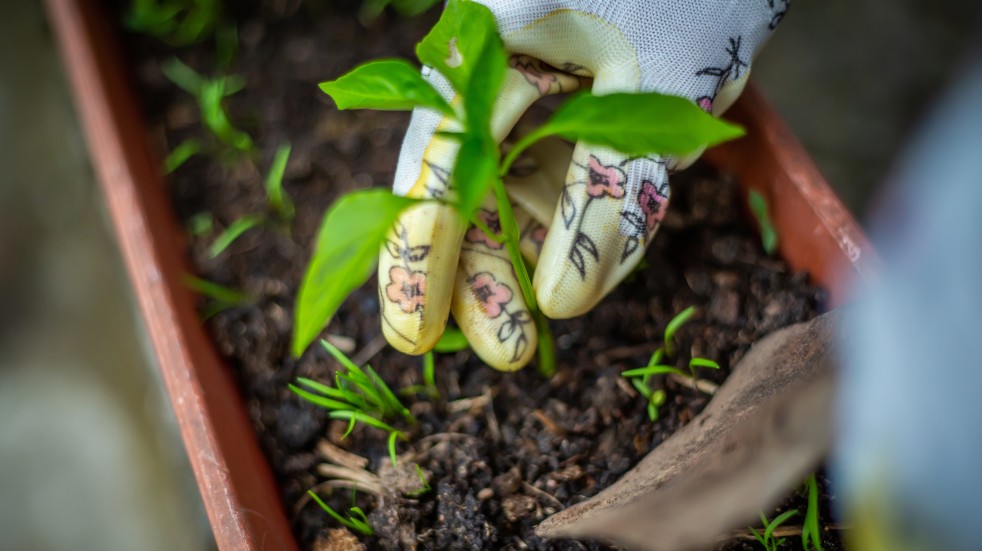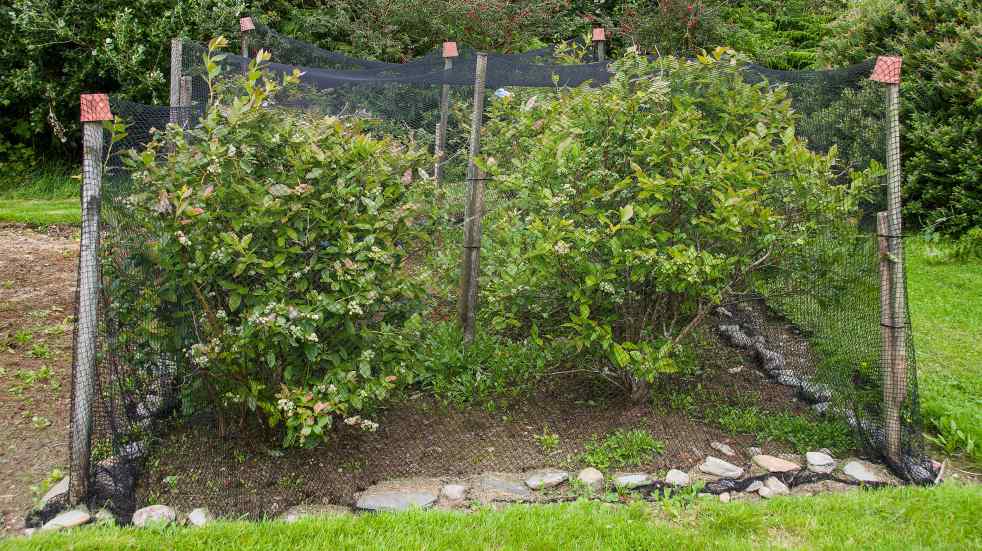
In the second part of our gardening series, green-fingered guru Cinead McTernan tells you what flowers, fruit and veg to grow, and what other jobs to tackle
Welcome to the second instalment in our three-part series, in which we are helping you to get your garden ready for the warmer months.
We haven't had the best of springs, with plenty of wind, rain and even sleet. But try to stick to the task in hand, as you'll be thankful for it when the weather finally turns and you can enjoy the fruits of your labour.
Remember that Boundless members can get money off gardening tools, seeds and accessories from retailers such as Wickes and B&Q. To find out more, visit our Shopping Discounts Hub.
Flowers to sow in May

Zinnias – Perfect for a cut-flower or cottage garden, these bright annuals should be sown directly in moist, well-draining, prepared soil, in a sunny position. Seedlings will appear after a week or two. When they are large enough to handle, thin them out to about 20cm apart. Don't know what kind of zinnias to grow? BBC Gardeners' World magazine has published a helpful guide here.
Annual meadow flowers – If you have a sunny patch, annual meadow flowers will put on a magnificent display throughout the summer, as well as providing plenty of nectar and pollen for bees and butterflies. Prepare for sowing by clearing, digging over and raking the desired area so that the soil is fine, and follow the directions on the packet for the right quantity to sow for the size of your area. Keep weeds at bay and water seedlings in dry weather.
Nasturtiums – These bright blooms pack a punch in borders from summer until the first frosts. Sun-worshippers, they prefer poor soil and are a useful variety to grow in a container as a trailing or climbing plant.
Calendula – A popular bedding plant that adds plenty of colour to borders and containers. 'Pot marigolds' are also edible and can be used to liven up salads or as an alternative to Saffron. Sow in full sun or partial shade in well-draining soil enriched with plenty of organic matter.
Fruit and vegetables to sow in May

Carrots – Grow in containers to avoid the dreaded carrot root fly, which can't fly higher than 60cm. At this time of year, choose a maincrop variety and sow seeds thinly about 1cm deep, in rows about 20cm apart. Unless the weather is particularly dry, they won't require too much watering, but keep on top of weeds as the seedlings appear. Read BBC Gardeners' World's guide to combatting carrot root fly.
Pumpkins – You can't beat carving a homegrown Jack O’Lantern when Halloween comes around. Pumpkins are easy to grow, and there’s lots of choice when it comes to size and colour. However, they do need space, sunshine and plenty of organic matter as they are heavy feeders.
French beans – Choose a sheltered site and build a cane support, tying the poles together at the top to form a wigwam. Prior to sowing, dig-in well-rotted organic matter. Sow five seeds at the base of each pole, about 4cm deep, and water well – especially when flowering. Remember to keep an eye out for slugs.
Sweetcorn – A good choice for borders or a large container, sweetcorn needs to grow in a block formation to help with pollination. Sow two seeds together in blocks about 20cm between each pair, and, once they germinate, remove the weaker seedling. Once established, apply a layer of organic matter as a mulch to help retain moisture, feed regularly and keep them well-watered if the weather is dry. Read BBC Gardeners' World magazine's guide to growing sweetcorn.
Spinach – Sow in beds or containers every week or two to keep a regular supply of tender, young leaves. A useful crop for a partially shady spot, spinach should be sown thinly in rows, about 3cm deep and 25cm apart, and watered well.
Other gardening jobs to do in May

Cover soft fruit with netting – Just as we look forward to eating fresh, juicy berries once they appear, so do the birds! The easiest way to tackle this issue is to cover plants with netting. Create a barrier with bamboo poles or similar, and secure the netting on top of it.
Chelsea chop – Named after the prestigious flower show, which usually takes place at this time of year, this technique is an effective way to encourage flowers to put on a second flush, as well as control their overall size and shape. After cutting back, feed and water well. Try it on asters, echinacea, phlox, heleniums and sedums. Read RHS's guide to doing a Chelsea chop.
Plant-out dahlias – Now that the risk of frost has passed, you can plant tubers or greenhouse-raised plants in their final positions, ready for a spectacular late summer/autumn display. Choose a sheltered, sunny spot and, when shoots appear, pinch-out the tips of the main shoot to encourage bushy, healthy plants.
Greenhouse watering – Start a regime to ensure that plants don't dry out in the warm, sunny weather. Early morning or evening is the best time to water, to avoid scorching leaves – it's also a great opportunity to keep an eye out for pests. Remember to ventilate by opening windows and doors if you don't have an automatic vent system in place.
Support herbaceous perennials – Upright plants like delphiniums, peonies and fuchsias will benefit from a bit of help to prevent their stems breaking in windy, wet weather. Staking early, before their foliage has developed, makes the task much easier as it enables plants to grow up, through the support. Use pea sticks, bamboo canes or specially designed hoops and cones. Read BBC Gardeners' World magazine's guide to the best garden obelisks and plant supports for climbers.
Do more with Boundless
As a Boundless member, you can benefit from year-round discounts on gardening equipment, as well as access to the Boundless Gardening Group, through which you can share inspiration with likeminded enthusiasts and attend a calendar of exclusive events. To find out more, visit our dedicated membership page.
Photos: Getty Images



